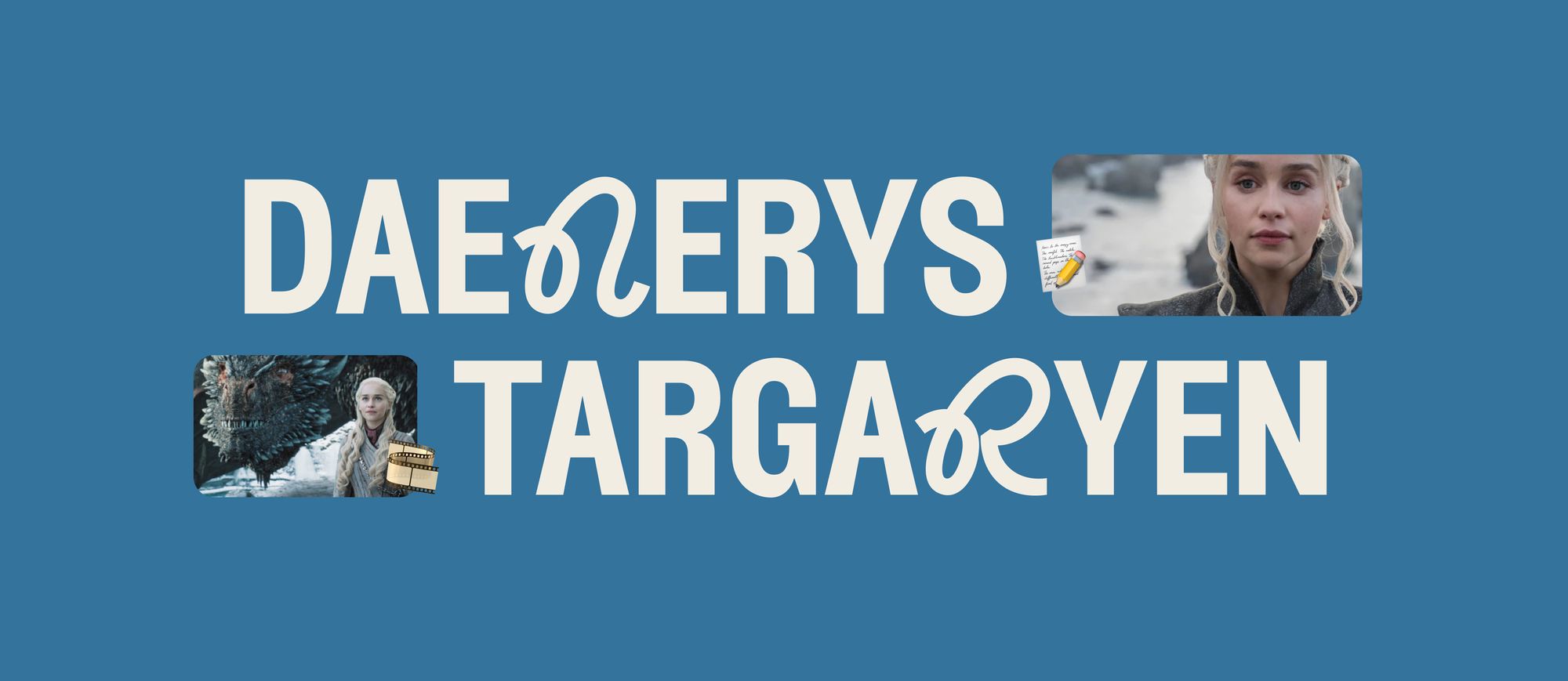And the story goes:
In the fiery blaze of her husband’s funeral pyre, Daenerys Targaryen stepped through the flames, unscathed and unbroken.
In the chaotic whirlwind, there were three dragon eggs – Targaryen legacy of might and power that once ruled all over Westeros, still in stone. The fire didn’t consume Daenerys, but welcomed as her own.
“Fire cannot kill a dragon.” As dawn broke, the ashes revealed the miracle the world hadn’t seen for a century – three newly hatched dragons nestled against their mother.
The woman who entered the fire as an outcast left it as the Mother of Dragons, the last Targaryen, determined to reclaim her ancestral throne – what’s rightfully hers.
(This will be a bit longer – but it’s worth it. Promise!)
Behind The Character
Let me say: If you’ve watched Game of Thrones, you know that Daenerys is a character you either love, or love to hate. There’s no in-between. (And I haven’t recovered yet from season 8.)
It comes down to the genius of George R. R. Martin, the author of “A Song of Ice and Fire” (adapted as “Game of Thrones” TV series) who doesn’t shy away from surprising and controversial narratives and building his characters as complex and flawed human beings. No wonder, Daenerys is both compassionate and ruthless in her quest for power – never a hero, nor a villain.
Martin drew inspiration from medieval wars of succession, especially the English Wars of the Roses, and built his world with similar societal and political contexts and dynamics. Like Henry Tudor, Dany spent much of her life in exile before raising an army to claim the throne. And in her story, she went from a timid girl to a powerful ruler, beloved and feared in equal measure.
What started out as noble intentions – reclaim what’s hers, free the oppressed, rule justly – however, teetered on the edge of tyranny. Dany set cities ablaze in her “all-or-nothing” mindset, causing us (as viewers) to question if the heroine we rooted for had lost her path.
The ending of Daenerys’ arc is a heartbreaking tragedy that reflects Martin’s views that corruption is inherent in absolute power, no matter how good the intentions are.
Peak at the moodboard I've compiled for more analyses on Daenerys.
Mapping Out The Narrative
For this issue, I want us to appreciate not a specific insight but masterful storytelling that made Daenerys a compelling figure both in fictional Westeros, as well as an emotion-stirring character for our audience.
Like all characters, Dany has a goal. Yet, unlike building a journey to overcome a challenge and get to the desired state, Martin (due to his TV writing experience) takes it up a notch – he sets one big long-term arc (claim the Iron Throne) and multiple seasonal arcs that unpack Daenerys’ persona. Every challenge builds a situation that tests Daenerys and shows the slow descent into darkness.
This is what keeps us at our toes, because like people in the books, we are enamoured by Daenerys, yet with every little arc – liberation of slaves, rule in Meereen, coming to King’s Landing – there are little “red” flags that illustrate the corrupting influence of power and tragic consequences of unchecked ambition. And it doesn’t matter whether she achieves the goal or not, since we see the character essence and build trust and admiration through actions, not big aspirations only.
The ending for Dany is a “cautionary tale” for us. Her ambition and power-hungry attitude started repelling her supporters. This is an inconsistency that people feel – and they lose trust when something familiar suddenly doesn’t match up.
Navigating To Your Brand
Yes, you could pick up 10 storytelling hacks but hear me out:
When talking online about what you do and why as a creator, we’re like TV characters for people. They only see glimpses of our lives, develop some sort of admiration and relationship, and even trust us enough to buy our offers.
So, make your online presence your very own TV show and write your story:
- Build your arc from the vision you have (last week, I wrote about audacious goals of Jonathan Livingston Seagull). This is your incredibly inspirational goal, with high stakes. For example: only working 20h/week to backpack around Europe.
- Contribute with seasonal arcs. Ask yourself: What’s going on in your life right now? What challenge are you solving and why? For example: You want to launch a community to reduce the 1:1 workload, or figure out trip logistics – share your thoughts and decisions, because that’s how people who “watch” your show can get to know your personality better and remember you when the time is right. Yes, especially through trivial non-work-related stuff! (And don’t trust anyone who tells you to only show 20% personality – you’d have tuned right out of Game of Thrones, if these characters only showed 20% of their true self).
- Reflect on your direction. Inconsistencies happen when we chase something that we don’t need, or say something we don’t really act upon. It manifests into doing things for content only, or launching a service because others do it, too. Check in with yourself whether the path makes sense for you – do you work on your goals? Is there a possibility that where you're going is heavily inspired by someone else and not your intentions and vision, so it doesn't align with your brand at all?
The story of Daenerys, despite its tragic end, is one of a compelling multi-faceted character with ambition, who paved her path. A story that goes beyond hero vs. villain or any one personality aspect.
